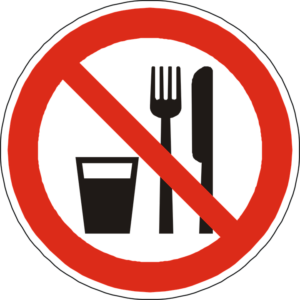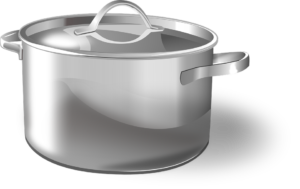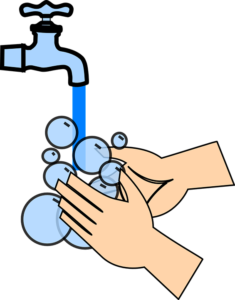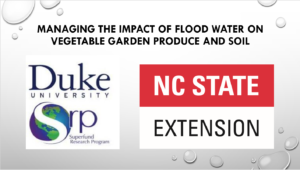Vegetable, Herb and Fruit Gardens Exposed to Floodwater
go.ncsu.edu/readext?553918
en Español / em Português
El inglés es el idioma de control de esta página. En la medida en que haya algún conflicto entre la traducción al inglés y la traducción, el inglés prevalece.
Al hacer clic en el enlace de traducción se activa un servicio de traducción gratuito para convertir la página al español. Al igual que con cualquier traducción por Internet, la conversión no es sensible al contexto y puede que no traduzca el texto en su significado original. NC State Extension no garantiza la exactitud del texto traducido. Por favor, tenga en cuenta que algunas aplicaciones y/o servicios pueden no funcionar como se espera cuando se traducen.
Português
Inglês é o idioma de controle desta página. Na medida que haja algum conflito entre o texto original em Inglês e a tradução, o Inglês prevalece.
Ao clicar no link de tradução, um serviço gratuito de tradução será ativado para converter a página para o Português. Como em qualquer tradução pela internet, a conversão não é sensivel ao contexto e pode não ocorrer a tradução para o significado orginal. O serviço de Extensão da Carolina do Norte (NC State Extension) não garante a exatidão do texto traduzido. Por favor, observe que algumas funções ou serviços podem não funcionar como esperado após a tradução.
English
English is the controlling language of this page. To the extent there is any conflict between the English text and the translation, English controls.
Clicking on the translation link activates a free translation service to convert the page to Spanish. As with any Internet translation, the conversion is not context-sensitive and may not translate the text to its original meaning. NC State Extension does not guarantee the accuracy of the translated text. Please note that some applications and/or services may not function as expected when translated.
Collapse ▲Watch 75 minute video on how to manage damage to vegetable gardens from flooding
Floodwater that has washed in from rivers, creeks or streams can bring in chemical contaminants like petroleum-based products and also biological pathogens and parasites from flooded sewage treatment plants, and animal operations. In addition, wet produce may grow toxic mold.
Discard (do not compost)
 The entire plant with produce that has come into direct contact with floodwater, even if it has not been completely submerged. Including:
The entire plant with produce that has come into direct contact with floodwater, even if it has not been completely submerged. Including:
-
Surface crops such as leafy greens, tomatoes, and corn;
-
Underground crops such as peanuts and sweet potatoes; and
-
Crops with a hard outer skin, such as watermelon and winter squash.
- Leafy greens, berries and other soft fruits that are difficult to wash even if they have only had indirect contact with flood water.
Wait 72 hours, thoroughly clean and cook (do not eat raw)
 produce that has had indirect contact with floodwater, for example by splashing.
produce that has had indirect contact with floodwater, for example by splashing.- Cooking will not eliminate the risk posed by industrial pollutants.
Sanitation
 Thoroughly wash hands after touching exposed produce, dry with a disposable paper towel.
Thoroughly wash hands after touching exposed produce, dry with a disposable paper towel.- Prevent cross-contamination by cleaning and then using one part bleach to nine parts water, or rubbing alcohol (ethanol or isopropyl) to disinfect surfaces, tools, and harvesting containers.
More Information on Flood Damage in the Landscape
- NC State Extension
- Louisianan State University Ag Center
- Duke University:
- Center for Disease Control:



